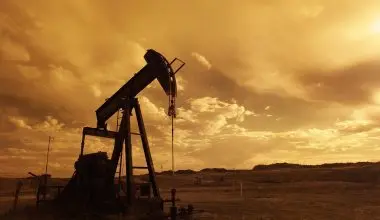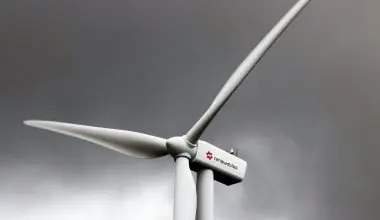Table of Contents Show
The world has finally come to some sort of acceptance that renewable energy resources are the future to a greener earth and the only way that our civilization can survive; hence, a transition from non-renewable energy resource to a renewable energy resource has now come a long way from being just a dream.
The planet cannot solely survive on a single energy resource to meet its requirements, therefore, a wide range of renewable energy resources are being found and used so that they may eventually replace the limited supply of available non-renewable energy resources.
Biomass is one of the renewable energy resources that we are now utilizing on a daily basis. Biomass is a type of energy resource which utilizes plant and animal materials or its products to form energy. This energy can be used to generate heat or power electricity to households or factories. Biomass is considered a renewable energy resource because of the fact that animals and plants can replenish their amount eventually hence allowing the materials to be used once again for energy production.
Here we will highlight some facts about biomass which you may have heard or have read about or they might be completely new for you. We might even be able to clear up some myths for you!
1. It is a renewable energy resource
Let’s start of with the most known fact about biomass; it is a renewable energy resource just like solar energy, wind energy, geothermal energy, Tidal energy and Hydropower. Any resource in order to be classified into a renewable energy resource must have the ability to replenish its stock again and again. In the case of biomass it can do just that. Plants can be regrown or the production of animals can be increased according to the needs so that required materials can be extracted from them to produce valuable energy.
2. History of Biomass Energy
Since the presence of humans on planet earth, biomass has been a constant supply for energy for humans even if we were not aware of it in the beginning. The simple burning of fodder to cook our food is the simplest of examples as to how biomass was being utilized by humans and how biomass supplied us with energy in various form to prolong our existence. When you think about it, even the discovery of fire through rubbing two stones and sparking a fire dry organic matter is a great example of biomass producing energy.
3. Alcohol Production
Biomass products rich in carbohydrates can be fermented to produce ethanol which can be used to produce various alcoholic beverages. Biomass fermentation has been used to make ethanol for use in Alcohol as well as for use in Bio-fuels which we will discuss ahead.
4. Its contribution to the world
10% of the world depends on biomass to produce energy making it a large contributor to the world’s energy production.
5. Many diverse sources
Biomass is a broad term for materials derived from either animal or plants; this means there is a diverse amount of sources at our disposal which can be utilized to produce energy. These included animal manure, dead plant, wood, and sugarcane, agricultural waste, human waste and dead trees.
6. Ethanol Producers
United States is the largest ethanol producer in the world having produced 16 Billion Gallons in 2017 alone. Brazil is the second largest producer and together Brazil and United States produce 85% of the world’s ethanol. Most of this ethanol is sourced from Biomass as we discussed.
7. Energy for Algae
The biomass produced from algae can be used to generate energy at a much faster and more efficient rate than the normal land biomass. Products such as ethanol, methanol, butanol, diesel, hydrogen and methane can be produced from the biomass of algae.
8. Carbon neutral
Biomass has the ability to become carbon neutral by possessing the ability to sequester carbon. Although biomass does release some amount of carbon; if used properly, it can store carbon when new biomass crops are grown. This gives biomass a rather huge advantage over its other fellow renewable energy resources and also the non-renewable energy resources such as fossil fuels which cannot re-store carbon quickly.
9. Energy from human waste
A human waste-powered generator was developed by the researchers from Penn state university demonstrating that the waste of about a 100,000 people can be able to produced 51,000 watts of energy.
10. World’s largest biomass power plant
The world’s largest Biomass power plant is located in the United Kingdom known as the Iron Birdge which was formerly a coal-fired power plant before it was converted into a biomass power plant in 2013. It is located in SevernGorge and has a capacity of producing 740 MW!
11. Use of Wood pellets in Biomass
Wood pellet is a constantly used material as a biomass. Currently Drax Biomass is the largest producer of wood pellet operating from their headquarters in Atlanta. Drax Biomass has 3 wood pellet plants producing 1.5 million tons of pellets per year.
12. Less Pollution
Biomass causes much less pollution than other currently available resources such as coal. The amount of emission of nitrogen, sulfur and mercury is significantly less than other resources. This also means that there is less of a chance that biomass will contribute in the production of smog or acid rain.
13. Beneficial for soil
Biomass has the ability to reduce the amount of erosion and runoff of soil. It also prevents the runoff of nitrogen from the soil and also helps the storage of carbon products in the soil which are essential for the fertility of the soils providing an enriched medium in which plants can grow.
14. Growing Importance of Biomass
Biomass is becoming more and more important as an energy resource for the planet. This is largely due to the increase in the population of the planet leading to an exponential increase in demand for energy resources along with the ongoing depletion of fossil fuels and other non-renewable energy resources. The ongoing call for a more environment friendly approach for energy production due to the ever-growing threat of climate change has made biomass an important commodity.
15. The Future of Biofuel
Aggressive marketing and awareness on the importance of biomass and its potential to be used as a fuel to power vehicles can potentially displace the oil import from the Gulf and can also reduce expenses of countries that completely depend on importing oil. Bio-fuel compatible vehicles have also made their way into the market. If countries produce biofuels through biomass, the need for fuels from other sources can be outright diminished.
Let me tell you a bit more about biofuels. Biofuels include Biodiesel (made from vegetable oil) and Ethanol (through the process of fermentation).Ethanol is now a part of almost all of petroleum gas sold in the US by at least 10% (hence known as E10). There are many vehicles that can run on higher ethanol concentrations as well and those are known as flexible-fuel vehicles. Although, vehicles made after 2007 have the ability to tolerate ethanol concentration up to 15%! Biodiesel has one major advantage that it can be utilized in the usual diesel engines without the need of changing engines. Pure bio-diesel is emission-free and completely biodegradable.
16. Sustainability certification
The roundtable on sustainable biofuels (RSB) has developed a rigorous testing system whose objective is to check the sustainability of biofuels in terms of environment, social and cultural elements. This global sustainability standard was developed in 2011 and helps to monitor how good biomass energy is in terms of sustainable energy production.
17. Minimization of cost
The cost of producing energy from biomass can be significantly reduced as new and further advanced technology is being introduced to generate energy.
18. Increased Efficiency
Although this is an extension of the previous point but it’s a point to be made. With the increased expertise, research and technological development; the efficiency of producing energy from biomass will surely increase.
19. Sustainable future
New farming methods along with improved and new agricultural methods designed specifically for the growth of biomass crops can lead to a higher yield of crops being produced with a reduction in soil erosion and the protection of the habitat and ecosystems in the process. Sustainable agriculture practices can be adopted in this case.
20. Fast growing varieties
Fast growing trees and grass species are now being considered for the production of biomass crops. These include tree species such as poplar and eucalyptus and species of grass like switch grass and alfalfa. However, we do need to make sure that growing these crops without rotation won’t harm the soil.
21. Electricity and heating
Biomass produces various forms of fuels such as methane that can provide electricity and heat to homes. The potential for generating electricity and heat from biomass can allow people to switch from the traditional methods usually used to generate electricity such as fossil fuels.





